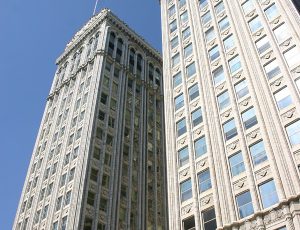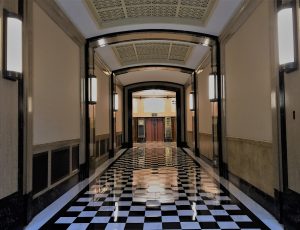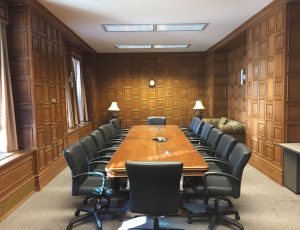When Lincoln Financial Group began to look at their physical office space and the properties they have inherited over a series of mergers and acquisitions, they realized they had a special challenge with the Jefferson Life office building in downtown Greensboro, North Carolina. Registered as a historical property, the building was a towering skyscraper of 17 floors, and 271,000 square feet when constructed in 1922. Alas through time, all vertical infrastructure items, plumbing drains, mechanical systems, and electrical feeders were in dire need for replacement. The building was also plagued with the immediate need for abatement procedures on all piping, ceiling, and floor materials. The building was fully occupied with office staff and connected to the adjacent Jefferson Pilot Life Insurance building, constructed in 1988 which was also part of the merger with Lincoln Financial Group. Complete staff relocation from the Jefferson was not an option. Due to the existing occupancy of the building, the designer had proposed seven phases of the project that would expand the project over four and a half years.
Initially, Lincoln Financial Group retained MBP for independent cost estimating, constructibility reviews, and commissioning activities. They realized a third party should review the construction phasing, schedule, cost estimating, and building systems of this major renovation. MBP was slated to provide commissioning services from the start, since staff at Lincoln Financial Group were familiar with MBP’s commissioning work in the Carolinas and Virginia. The focus of MBP’s review was to add clarity and constructibility to the new vertical infrastructure while meeting the needs of the business units slated for occupancy in the renovated areas.
Lincoln Financial Group can now continue to occupy and take pride in their historic building that adds character to downtown Greensboro, and they can be confident that appropriate choices were made to provide cost effective energy systems, and the complete removal of hazardous materials through a certified abatement program, while maintaining the historic nature of the building. The building has infrastructure and systems that should carry it for another 60 to 70 years. Plus, the business units have open floor plans that allow a flexibility for office teams, agile work spaces, and new electrical/IT systems that can provide for future needs.




